Cartilage is a specialized connective tissue that plays a vital role in the structure and function of the human body. Unlike bone, cartilage is flexible yet firm, making it essential for smooth joint movement, shock absorption, and maintaining the shape of certain body parts like the nose and ears. Understanding the different types of cartilage and their specific functions is important for students in the medical and nursing fields, as it helps in understanding joint mechanics, injury management, and various clinical conditions.
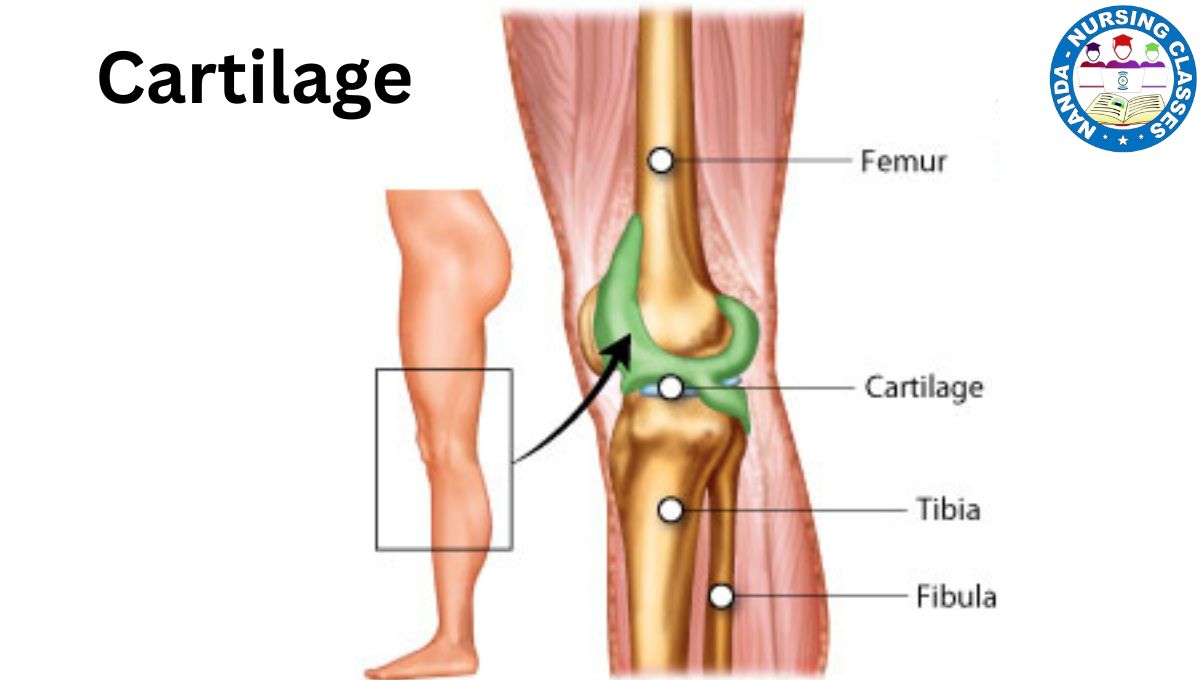
Cartilage
What Is Cartilage?
Cartilage is a strong but flexible connective tissue found in many parts of the human body. It is softer than bone but tougher than muscle or fat. Cartilage is made up of special cells called chondrocytes, which are surrounded by a gel-like matrix rich in collagen and proteoglycans.
Characteristics of Cartilage
What are the Characteristics of Cartilage?
-
Avascular: It has no blood vessels, which means nutrients reach it through diffusion, making healing very slow.
-
Flexible: Cartilage is more flexible than bone but strong enough to support body structures.
-
Smooth Surface: It helps reduce friction between bones in joints.
Types of Cartilage
What are the Types of Cartilage in the Human Body?
What are the 3 Types of Cartilage?
There are three main types of cartilage, each with unique features and functions:
Hyaline Cartilage
Hyaline cartilage is the most common and abundant type of cartilage in the human body. The word “hyaline” means glassy, and this cartilage gets its name from its smooth, translucent appearance under the microscope.
It plays a crucial role in supporting the structure of various organs and allows smooth and frictionless movement at joints. You can find hyaline cartilage in several important areas of the body, including the nose, trachea, larynx, the ends of long bones (articular cartilage), and the costal cartilage of the ribs.
Its main functions include:
-
Supporting and cushioning joints during movement.
-
Reducing friction between bones by providing a smooth, lubricated surface.
-
Maintaining the shape of respiratory structures like the trachea and nose.
Because it is smooth and resilient, hyaline cartilage enables flexible yet stable movement, especially at joints like the knees, elbows, and shoulders. However, like other types of cartilage, it has limited capacity to heal because it lacks blood vessels.
In summary, hyaline cartilage is essential for joint function, structural support, and mobility, making it one of the most important connective tissues in the body.
Elastic Cartilage
Elastic cartilage is a specialized type of cartilage that contains a high concentration of elastic fibers in its matrix. These elastic fibers give it the unique ability to bend and return to its original shape, making it more flexible than other types of cartilage.
You can find elastic cartilage in areas of the body that require both flexibility and structural support, such as the external ear (also called the pinna) and the epiglottis (the flap in the throat that prevents food from entering the windpipe during swallowing).
Its main functions include:
-
Providing flexible support to soft structures.
-
Maintaining the shape of structures even after bending or folding.
-
Allowing repeated movement without losing form, such as when the ear is bent or when the epiglottis moves during swallowing.
In summary, elastic cartilage is essential in areas where both flexibility and shape retention are required, helping structures like the ear and epiglottis function properly while maintaining their form.
Fibrocartilage
Fibrocartilage is the strongest and most durable type of cartilage in the human body. It is made up of dense bundles of collagen fibers, which provide it with excellent strength and the ability to withstand heavy pressure and resist compression.
This type of cartilage is found in areas of the body that experience intense stress and mechanical loads, such as the intervertebral discs (located between the vertebrae of the spine), the menisci of the knee joint, and the pubic symphysis (a joint in the pelvis).
Key functions of fibrocartilage include:
-
Absorbing shock during movement, especially in weight-bearing joints.
-
Providing strong support and stability in high-stress areas.
-
Preventing bone-to-bone contact by cushioning joints under pressure.
In summary, fibrocartilage is essential for maintaining joint stability and protecting bones in areas subjected to repeated stress or compression, making it vital for functions like walking, lifting, and maintaining posture.
Locations of Cartilage
Where are the Cartilage Locations in the Human Body?
Cartilage is a specialized connective tissue found in various parts of the body. It provides support, flexibility, and cushioning where needed, especially in joints and soft structures. Below is a detailed overview of where cartilage is located and its specific functions:
1. Joints (Articular Cartilage)
Articular cartilage covers the ends of bones where they meet to form joints, such as the knees, elbows, hips, and shoulders.
Function: It enables smooth and pain-free movement by reducing friction and absorbing shock during physical activities.
2. Rib Cage (Costal Cartilage)
Costal cartilage connects the ribs to the sternum (breastbone). It forms a flexible bridge between the bony ribs and the chest wall.
Function: It allows the rib cage to expand and contract during breathing, aiding in lung expansion.
3. Nose (Nasal Cartilage)
Cartilage in the nose includes the septal, lateral, and alar cartilages. These form the shape and structure of the nose.
Function: It supports the external shape of the nose while maintaining flexibility.
4. Ears (Auricular or Elastic Cartilage)
Elastic cartilage is found in the outer ear (pinna) and ear canal.
Function: It maintains the shape of the ear while allowing it to bend and flex without breaking.
5. Larynx and Throat (Laryngeal Cartilage)
The voice box (larynx) is supported by several cartilages including the thyroid cartilage (Adam’s apple), cricoid cartilage, and epiglottis.
Function: These cartilages help protect the airway, support voice production, and prevent food from entering the trachea during swallowing.
6. Trachea and Bronchi (Respiratory Cartilage)
The walls of the trachea (windpipe) and bronchi are reinforced with C-shaped rings of hyaline cartilage.
Function: These rings keep the airways open, ensuring that air can pass freely to and from the lungs.
7. Intervertebral Discs (Fibrocartilage)
Fibrocartilage is located between the vertebrae of the spine in the form of intervertebral discs.
Function: It acts as a cushion, absorbing shock and allowing flexibility in the spinal column.
8. Pubic Symphysis
This is a fibrocartilaginous joint located between the left and right pubic bones.
Function: It provides slight movement and flexibility, especially during childbirth and walking.
9. Menisci of the Knee
The menisci are crescent-shaped pads of fibrocartilage located in each knee joint.
Function: They stabilize the knee and help absorb stress during movement.
10. Growth Plates (Epiphyseal Plates)
In growing children and adolescents, cartilage is found in the growth plates at the ends of long bones.
Function: It allows bones to lengthen and grow during development. Once growth is complete, this cartilage is replaced by bone.
Functions of Cartilage
What are the Functions of Cartilage?
Cartilage serves several essential purposes:
Shock Absorption
Cartilage plays several vital roles in the human body that contribute to both movement and structure. One of its most important functions is shock absorption. It acts as a cushion between bones, especially in joints like the knees and spine, helping to absorb the impact during activities such as walking, running, or jumping.
Support Structure
Cartilage also provides a supportive structure to certain soft body parts that do not contain bones. For example, the nose, ears, and windpipe rely on cartilage to maintain their shape and flexibility, allowing them to bend without breaking.
Smooth Joint Movement
Another crucial function of cartilage is to enable smooth joint movement. The smooth surface of cartilage at the ends of bones reduces friction during movement, allowing bones to glide over one another easily and painlessly. This helps prevent wear and tear in the joints.
Bone Development
In children and adolescents, cartilage plays a key role in bone development. During early growth stages, cartilage acts as a framework or blueprint where new bone is formed. This process, called endochondral ossification, is how long bones like the femur grow and develop properly.
Importance of Cartilage
Why Is Cartilage Health Important?
Cartilage plays a crucial role in maintaining healthy, pain-free movement and overall joint function. It provides a smooth, cushioned surface between bones, allowing joints to move easily without friction. When cartilage is healthy, it ensures joint stability, flexibility, and shock absorption, which are essential for everyday movements like walking, bending, and lifting.
However, when cartilage becomes damaged—due to injury, overuse, or aging—it can no longer perform its protective function effectively. This often leads to joint pain, stiffness, swelling, and reduced mobility. Over time, damaged cartilage can result in serious conditions such as osteoarthritis, where bones rub directly against each other, causing discomfort and inflammation.
Unlike other tissues in the body, cartilage has no blood supply, which means it has a limited ability to heal or regenerate on its own. Because of this, maintaining cartilage health through proper care, exercise, and early intervention is essential. Taking steps to protect your cartilage today can help prevent long-term joint problems in the future.
Cartilage Disorders
What are the Common Cartilage disorders?
Cartilage disorders can affect mobility, cause discomfort, and lead to long-term joint issues if not managed properly. Below are some of the most common cartilage-related conditions:
1. Osteoarthritis
Osteoarthritis is the most widespread cartilage disorder, typically affecting older adults. It occurs when the protective cartilage in joints gradually wears down, leading to pain, stiffness, and limited movement. As the cartilage thins, bones begin to rub against each other, causing inflammation and discomfort. It often affects the knees, hips, and hands.
2. Chondromalacia Patellae
Also known as runner’s knee, this condition involves the softening and breakdown of the cartilage under the kneecap (patella). It’s common in young athletes and people who frequently stress their knees. Symptoms include knee pain, grinding sensations, and discomfort while climbing stairs or sitting for long periods.
3. Cartilage Tears
Tears can occur in cartilage due to trauma or overuse, especially in areas like the knee (e.g., meniscus tear) or shoulder. These injuries are common in athletes and can result in swelling, instability, and sharp pain during movement. Treatment may involve rest, physiotherapy, or surgical repair.
4. Costochondritis
This is an inflammation of the cartilage that connects the ribs to the breastbone (sternum). It causes sharp chest pain, which may mimic a heart attack, though it is not heart-related. It’s usually caused by repetitive strain or injury and often resolves with rest and anti-inflammatory medications.
5. Relapsing Polychondritis
A rare autoimmune disease, relapsing polychondritis causes inflammation of cartilage throughout the body, including the ears, nose, joints, and respiratory tract. Symptoms include redness, swelling, and tenderness in affected areas. It requires long-term medical management to control inflammation and prevent damage.
6. Herniated Disc (Spinal Cartilage Injury)
In the spine, the intervertebral discs are made of cartilage. When a disc is damaged or herniated, it can press on nearby nerves, causing pain, numbness, or weakness, especially in the back or legs. This condition often requires physical therapy and, in severe cases, surgery.
7. Nasal Septal Deviation
The cartilage that divides the nostrils (nasal septum) can become crooked or displaced, either from birth or due to injury. This condition, known as nasal septal deviation, can cause breathing difficulties, frequent sinus infections, and snoring. Surgery (septoplasty) may be needed for correction.
8. Articular Cartilage Injury
Articular cartilage is the smooth, white tissue that covers the ends of bones in joints. Its main function is to reduce friction and absorb shock during movement. Damage to articular cartilage can occur due to trauma, overuse, aging, or joint instability. These injuries often affect the knees, ankles, or shoulders and may result in joint pain, swelling, stiffness, and limited mobility. Since articular cartilage does not heal easily, treatment may include physical therapy, injections, or surgical options such as microfracture or cartilage transplantation.
9. Genetic Cartilage Disorders
Some cartilage disorders are inherited and caused by genetic mutations, affecting cartilage formation and growth. Examples include:
-
Achondroplasia: A common form of dwarfism caused by abnormal cartilage development that affects bone growth.
-
Multiple Epiphyseal Dysplasia (MED): A rare condition where cartilage in the growth plates of bones does not develop properly, leading to joint pain, early-onset arthritis, and short stature.
-
Pseudoachondroplasia: Similar to achondroplasia but often not apparent at birth, this condition leads to abnormal cartilage and bone development, causing joint pain and limb deformities in childhood.
Tips to Maintain Healthy Cartilage
Keep your cartilage strong with these simple strategies:
-
Stay Active: Regular exercise keeps joints flexible and nourished.
-
Eat Nutrient-Rich Foods: Include vitamin C, D, and collagen-boosting nutrients.
-
Avoid Excess Weight: Extra body weight strains joints and speeds cartilage wear.
-
Protect Your Joints: Use proper form during exercise and wear supportive shoes.
Early care prevents long-term problems.
Can Damaged Cartilage Heal?
Cartilage healing is slow and limited. However, certain treatments can help:
-
Physical Therapy: Restores function and reduces pain.
-
Medications: Anti-inflammatory drugs reduce swelling.
-
Surgical Options: Includes microfracture, cartilage grafting, or joint replacement.
Medical guidance is crucial in serious cases.
Conclusion
In summary, cartilage is a crucial tissue that supports and protects our joints and soft structures throughout the body. The three main types—hyaline, elastic, and fibrocartilage—each have unique locations and roles, from providing smooth joint movement to withstanding heavy pressure and maintaining structural shape. A strong understanding of cartilage types and functions lays the foundation for learning about joint health, mobility, and related medical conditions such as arthritis or cartilage injuries. Cartilage is essential for smooth, pain-free movement. It cushions joints, supports soft tissues, and plays a key role in development. Protecting and caring for your cartilage ensures lifelong mobility and joint health. Pay attention to its needs and seek help if issues arise.
Must Read
FAQs on Cartilage
1. What is cartilage?
Cartilage is a flexible, rubbery connective tissue found in various parts of the body. It provides support and cushioning for joints and helps maintain the structure of organs like the ear, nose, and respiratory tract.
2. What are the main types of cartilage?
There are three main types of cartilage:
-
Hyaline cartilage – most common; found in the nose, trachea, larynx, and at the ends of long bones.
-
Elastic cartilage – flexible; found in the external ear and epiglottis.
-
Fibrocartilage – tough and strong; found in intervertebral discs and menisci of the knee.
3. What is the function of cartilage in the body?
Cartilage:
-
Supports and shapes soft tissues
-
Reduces friction in joints
-
Acts as a cushion between bones
-
Aids in smooth movement
4. Where is cartilage found in the body?
Cartilage is found in:
-
Joints (articular cartilage)
-
Rib cage (costal cartilage)
-
Ear and nose (elastic cartilage)
-
Intervertebral discs (fibrocartilage)
-
Trachea and larynx (hyaline cartilage)
5. Is cartilage the same as bone?
No. Cartilage is more flexible and softer than bone. Unlike bone, it doesn’t contain blood vessels and heals more slowly.
6. Can cartilage repair itself?
Cartilage has limited self-repair ability because it lacks blood supply. Minor damage may heal slowly, but severe injury often requires medical intervention.
7. What happens when cartilage is damaged?
Damaged cartilage can cause pain, stiffness, swelling, and loss of joint function. It may lead to conditions like osteoarthritis if not treated properly.
8. How can cartilage damage be treated?
Treatment options include:
-
Rest and physiotherapy
-
Anti-inflammatory medications
-
Cartilage repair surgeries (e.g., microfracture, autologous chondrocyte implantation)
-
Joint replacement in severe cases
9. How can I keep my cartilage healthy?
-
Maintain a healthy weight
-
Exercise regularly (low-impact activities)
-
Avoid joint injuries
-
Eat a balanced diet rich in vitamins C, D, and collagen
10. Why is cartilage important in nursing education?
Understanding cartilage helps nurses assess joint conditions, support rehabilitation, and educate patients about joint health and injury prevention
We have divided the Skeletal system into four sections for your convenience. You may read each part by clicking on the topics listed below:
Part 1 – Bone🦴
Part 2 – cartilage
Part 3 – ligaments
Part 4 – Joint

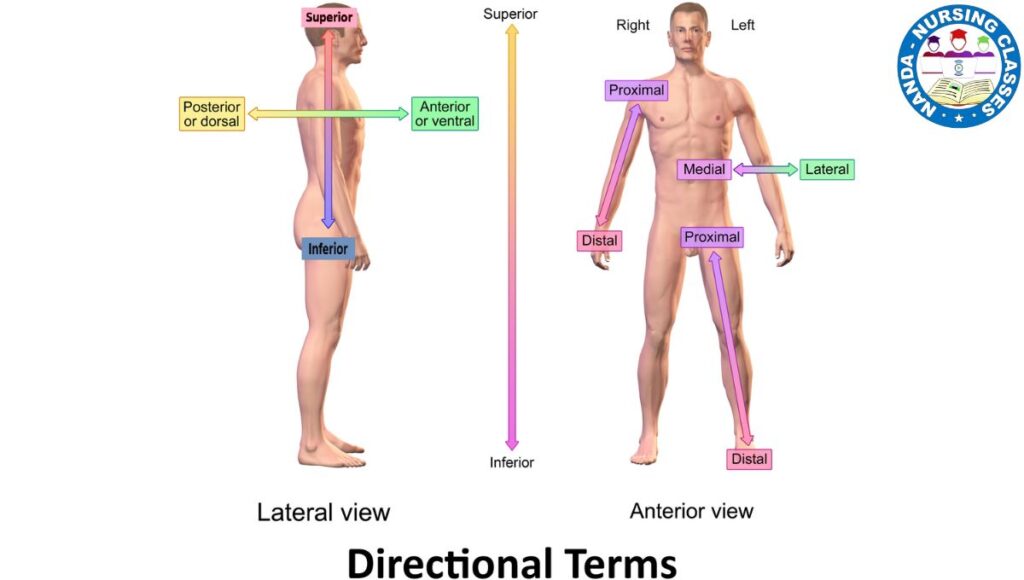
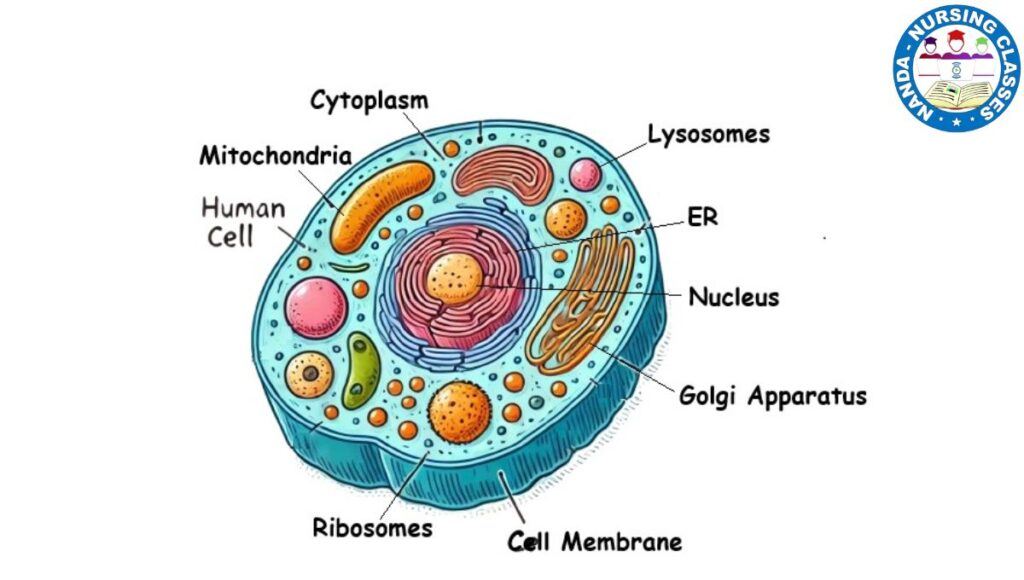
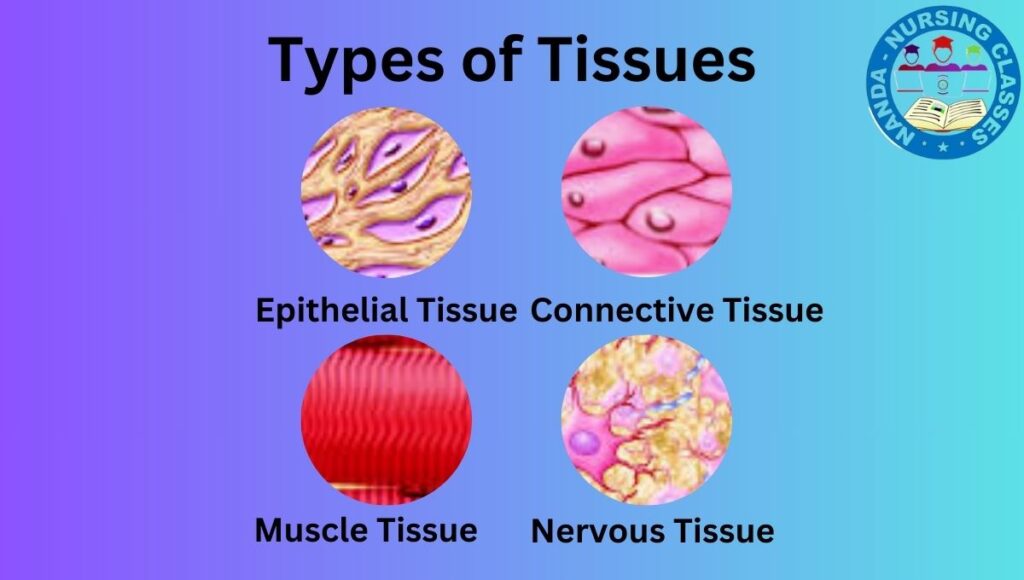

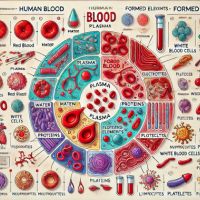
A formidable share, I just given this onto a colleague who was doing a bit evaluation on this. And he in fact bought me breakfast as a result of I found it for him.. smile. So let me reword that: Thnx for the deal with! But yeah Thnkx for spending the time to discuss this, I feel strongly about it and love reading more on this topic. If doable, as you become experience, would you thoughts updating your blog with extra particulars? It is highly useful for me. Large thumb up for this blog put up!
I like this post, enjoyed this one regards for posting.